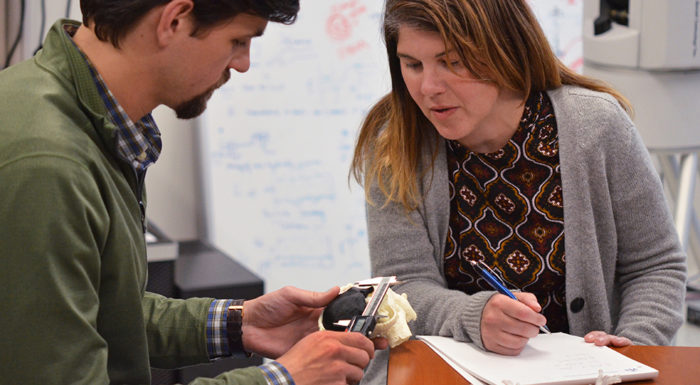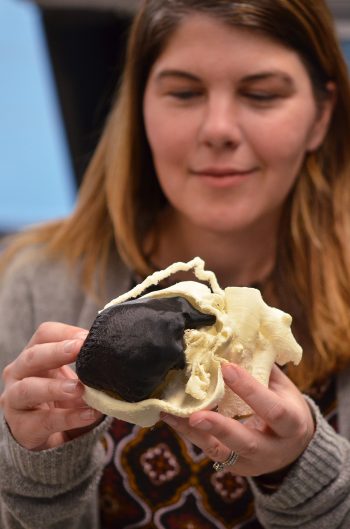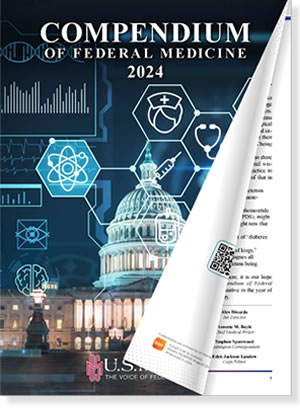3D Printing Already Personalizes Care in Other Ways
ANN ARBOR, MI—VA scientists in Michigan recently announced they are working to create a three-dimensional-printed artificial lung. The lab-created lung could transform treatment for some of the approximately one million veterans who have chronic obstructive pulmonary disorder. A prototype is expected within a few months.
“The results of this project could change millions of lives for the better,” said VA Secretary Robert Wilkie.
The initial aim is construction of a temporary lung to help patients survive the wait for a transplant and for those who need additional breathing support while their lungs heal, according to a VA release. Eventually, the lungs could support breathing on a longer-term basis.
For the past decade, the lead scientist, Joseph A. Potkay, PhD, a biomedical engineer at the VA Ann Arbor, MI, Health Care System in Michigan, research assistant professor in the Department of Electrical Engineering and Computer Science at Case Western Reserve University in Ohio, and an adjunct research investigator in the Department of Surgery at the University of Michigan, has been researching the advantages of recreating tiny structures that enable efficient gas exchange as the base of artificial lungs.
“Microfabrication is mainly a two-dimensional construction technology,” he said. “With a 2D design, you stack many single 2D layers together. That has limited the ease of creating devices that are large enough for human use. You have less freedom in how you design the blood channels. 3D printing these devices may be a solution to these problems. We can be much more precise and efficient with how the blood flow path is laid out in three dimensions.”

The microfluidic lungs under development better replicate the structure and dimensions of the pulmonary blood vessels and have biocompatible coatings that reduce immune reactions that lead to clotting in current artificial lungs.
While it might be some time before veterans personally benefit from 3D-printed lungs, the same technology is already improving veteran’s lives in myriad ways, said Beth Ripley, MD, PhD, chair of the VHA’s 3D printing Advisory Committee, a VA senior innovation fellow and a radiologist at the Puget Sound VAMC in Seattle.
“Because 3D printing allows us to create items for single use for specific individuals, it’s really changed the way we think about delivering care in medicine in the VA,” she told U.S. Medicine.
Currently the VA uses 3D printing for presurgical planning, orthotics and braces, and prosthetics.
“As a radiologist, I’m particularly interested in how 3D printing helps us visualize patients’ anatomy better. Imaging produces a two-dimensional black and white image. You look at thousands and try to build an image in your head, but it’s hard to do,” she said.
Three-Dimensional Replica
Printing out a three-dimensional replica enables physicians to hold a model in their hand and come up with a plan for surgery at their desk, she noted.

The models also help patients understand their own anatomy and the procedures a physician might be considering, and that allows them to make a better-informed decision.
“One of the early adopters in Puget Sound, Dr. Michael Porter, specialized in partial nephrectomy surgery. Patients can lose a lot of renal function if we remove the whole kidney, but removing enough of a tumor without affecting arteries, veins or ducts is challenging. It’s especially complicated if a patient has extra vessels or unusually routed vessels,” Ripley said.
Porter sits with patients and discusses the model with them, identifying the tumor and vessels and discussing what he wants to do.
The physical model resolves a lot of frustration for patients. “One patient said, ‘When the doctor shows me images, it’s just a bunch of goobledy gook. When I saw my kidney and could hold the model, it made sense,” Ripley recounted. “It creates a level playing field, regardless of your role as a patient, family member, nurse or doctor; everyone is on the same page and can make an informed decision.”
Outside the surgery suite, 3D printing is also having an impact on care. Occupational therapists and rehabilitation engineers also use the technology to create custom orthotic devices.
“Patients may be missing parts of digits or have other structural damage to the hand,” Ripley said. “Hand therapists often make braces to help patients recover function.” Building a custom brace can take an hour, and patients may need to replace them three or four times a year, and each time it’s a little different, she noted.
“Mary Matthews-Brownell (at the Tacoma, Washington VA) realized that we can take a patient’s favorite brace and scan it, digitize it, so we can print it again and ensure the patient gets the same thing each time. In addition, now the therapist can see one-third more patients, and patients can drive in with no appointment needed to get a replacement,” Ripley explained. The customization also allows therapists to add features, make the braces softer or in favorite colors.
Another application is building prosthetics for specialized use. “We’re thinking about how to create prosthetics that would allow veterans to do things they otherwise wouldn’t be able to. For instance, recently, we built a special prosthesis that a veteran used to go on a 7-mile hike,” Ripley said.
Currently, 21 sites across the VA are using 3D printing, up from just three in 2017. “Another six or seven are interested in building their capabilities. The goal of all of this is to provide 3D services to all nine million veterans in our care,” Ripley said. The challenge will be in reaching veterans in rural areas without requiring them to travel significant distances. “Perhaps the answer is delivering devices or models to their door.”
The VA’s success so far puts it in the lead internationally where only 90 hospitals are known to be using 3D technology on a regular basis, Ripley noted.
“VA remains at the forefront of innovative work in 3D printing by expanding our expertise across VA,” said Wilkie. “Through this growing virtual network, VA continues to help define how 3D printing technology will be used broadly in medicine for the benefit of patients.”

